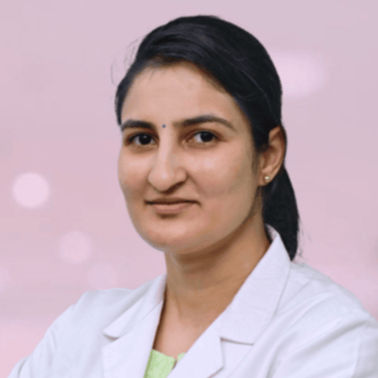Neuro-Oncology: Understanding Brain and Spine Tumours
Explore neuro-oncology and learn about brain and spine tumours, including types, symptoms, diagnosis, and treatment options for better understanding and care.

Written by Dr. M L Ezhilarasan
Reviewed by Dr. D Bhanu Prakash MBBS, AFIH, Advanced certificate in critical care medicine, Fellowship in critical care medicine
Last updated on 10th Oct, 2025

Introduction
Receiving a diagnosis related to a brain or spine tumour can be an overwhelming and frightening experience. The field of medicine dedicated to your care in this situation is neuro-oncology. This specialised branch sits at the crossroads of neurology and oncology, focusing exclusively on the diagnosis, treatment, and management of tumours within the central nervous system (CNS), which includes the brain and spinal cord. This guide is designed to demystify this complex field for patients, caregivers, and anyone seeking to understand these conditions. We will walk you through the essentials, from the types of tumours and their symptoms to the latest diagnostic methods, innovative treatments, and the crucial role of your healthcare team. Our goal is to empower you with knowledge, providing a clear roadmap for what to expect and highlighting the continuous advancements offering hope in neuro-oncology.
What is Neuro-Oncology? The Specialists Behind the Care
Neuro-oncology is more than just a medical term; it's a comprehensive approach to caring for people with tumours of the nervous system. Unlike other cancers, tumours in the brain and spine present unique challenges because they originate in the organ responsible for our thoughts, movements, and senses. This necessitates a highly specialised team.
The Neuro-Oncologist: Your Central Care Coordinator
A neuro-oncologist is a neurologist who has undergone additional, specialised training in the treatment of nervous system cancers. They are not surgeons but are experts in the complex biology of these tumours. Their role is pivotal: they interpret diagnostic tests, manage treatment plans that often involve chemotherapy or targeted therapies, coordinate with surgeons and radiation oncologists, and help manage symptoms and side effects throughout the care journey. Think of them as your primary guide through the entire process.
The Multidisciplinary Team: A Collaborative Approach
No single doctor can manage a neuro-oncologic condition alone. The best outcomes are achieved through a multidisciplinary team (MDT). This team typically includes:
• Neurosurgeons: Specialists who perform biopsies and surgical removals of tumours.
• Radiation Oncologists: Doctors who plan and deliver radiation therapy.
• Neuroradiologists: Experts in interpreting MRI and CT scans of the brain and spine.
• Pathologists: Who analyse tumour tissue to provide a precise diagnosis.
• Oncology Nurses, Social Workers, and Rehabilitation Specialists: Who provide critical supportive care.
This collaborative model ensures every aspect of your care is considered by an expert, leading to a more personalised and effective treatment plan.
Consult a Neuro-Oncologist for the best advice
Types of Tumours in Neuro-Oncology
Understanding the specific type of tumour is the first critical step, as it dictates the treatment approach and prognosis. tumours are classified based on their origin and behaviour.
Primary Brain Tumours: Where it Begins
These tumours originate from cells within the brain or spinal cord itself. They are named after the type of cell they arise from. They can be benign (non-cancerous) or malignant (cancerous).
Gliomas: The Most Common Primary Adult Tumour
Gliomas develop from glial cells, the supportive tissue of the brain. They are a diverse group, ranging from slow-growing (low-grade) to highly aggressive (high-grade). The most aggressive type is glioblastoma multiforme (GBM).
Meningiomas: Typically Benign but Problematic
Meningiomas arise from the meninges, the membranes covering the brain and spinal cord. About 90% are benign and slow-growing. However, because they can compress sensitive brain areas as they enlarge, they often require treatment.
Metastatic Brain Tumours: Cancer from Another Site
Also known as secondary brain tumours, these are actually the most common type of brain tumour. They occur when cancer cells from another part of the body, such as the lung, breast, skin (melanoma), or colon, travel to the brain and form new tumours. The treatment focuses on both the primary cancer and the brain metastases.
Spinal Cord Tumours: A Distinct Challenge
These tumours, which can also be primary or metastatic, grow within or adjacent to the spinal cord. They often cause symptoms by pressing on the cord or nerves, leading to pain, numbness, or weakness in the limbs. Their location makes treatment particularly delicate.
Recognising the Signs: Symptoms of Neuro-Oncologic Conditions
The symptoms of a brain tumour are varied and can mimic other conditions. They generally fall into two categories: those caused by increased pressure inside the skull and those related to the tumour's specific location.
General Symptoms Related to Pressure
As a tumour grows, it can increase intracranial pressure. Common symptoms include:
• Persistent, worsening headaches (often worse in the morning).
• Unexplained nausea or vomiting.
• Seizures, especially in someone with no prior history.
• Gradual changes in vision, hearing, or speech.
• General drowsiness or a change in mental alertness.
Focal Symptoms: When Location Matters
When a tumour presses on a specific part of the brain, it disrupts that area's function. This can lead to:
• Weakness or paralysis in an arm or leg.
• Loss of sensation in parts of the body.
• Difficulty with balance or coordination.
• Personality or behavioural changes.
• Memory problems or confusion.
If you or a loved one experience persistent or worsening neurological symptoms like these, it is essential to consult a doctor. You can connect with a specialist for an initial evaluation quickly by consulting a neurologist online with Apollo24|7.
How are Neuro-Oncologic Conditions Diagnosed?
A timely and accurate diagnosis is crucial. The process typically involves several steps to confirm the presence of a tumour and determine its exact type and grade.
Neurological Examination: The First Step
A doctor will test your vision, hearing, balance, coordination, reflexes, and strength. This helps identify any neurological deficits and may provide clues about the tumour's location.
Imaging Techniques: MRI and CT Scans
Imaging is the cornerstone of diagnosis.
• Magnetic Resonance Imaging (MRI): This is the gold standard. It provides highly detailed images of the brain and spinal cord. A special dye (contrast agent) is often used to make tumours more visible.
• Computed Tomography (CT) Scan: This may be used initially in emergency settings to quickly identify bleeding or large masses.
The Role of Biopsy and Pathological Analysis
While imaging shows a mass, a biopsy is often needed for a definitive diagnosis. During a biopsy, a neurosurgeon removes a small sample of tumour tissue, which is then analysed by a pathologist under a microscope. This analysis determines the tumour type and grade, which is essential for planning treatment. Apollo24|7 offers convenient home collection for routine blood tests that may be required as part of your overall health workup before procedures.
Get Your Health Assessed
Treatment Modalities in Neuro-Oncology
Treatment plans are highly personalised. The choice depends on the tumour type, size, location, and your overall health. The main treatment for glioblastoma and other tumours often involves a combination of the following.
Neurosurgery: The Cornerstone of Treatment
Whenever safe and possible, surgical removal (resection) is the first step. The goal is to remove as much of the tumour as possible without damaging surrounding healthy brain tissue. Advanced techniques like intraoperative MRI and awake brain surgery allow surgeons to operate with greater precision.
Radiation Therapy: Targeting Cancer Cells Precisely
Radiation uses high-energy beams to destroy cancer cells or stop them from growing. It can be used after surgery to eliminate remaining cells or as a primary treatment for inoperable tumours. Techniques like Stereotactic Radiosurgery (e.g., Gamma Knife) deliver a highly focused beam with pinpoint accuracy, minimising damage to healthy tissue.
Systemic Therapies: Chemotherapy and Beyond
These treatments travel throughout the body to target cancer cells.
• Chemotherapy: Uses powerful drugs to kill fast-dividing cells. A common drug for brain tumours is temozolomide.
• Targeted Therapy: These drugs target specific molecules or pathways that are crucial for cancer cell growth and survival. They tend to have different side effects than traditional chemotherapy.
• Immunotherapy: This is a revolutionary approach that helps your own immune system recognise and attack cancer cells. It is an active area of research in neuro-oncology.
Life After Diagnosis: Survivorship and Supportive Care
The journey doesn't end with active treatment. Survivorship care focuses on monitoring for recurrence, managing long-term side effects (like fatigue or cognitive changes), and improving quality of life. Rehabilitation, including physical, occupational, and speech therapy, is often vital. Emotional and psychological support for patients and caregivers is equally important.
The Future of Neuro-Oncology: Emerging Research and Hope
The field is advancing rapidly. Researchers are exploring novel targeted therapies based on the genetic makeup of individual tumours, more effective immunotherapies, and advanced drug delivery systems to bypass the blood-brain barrier. Participation in clinical trials offers eligible patients access to these cutting-edge treatments, driving progress forward.
Conclusion
Navigating a diagnosis in neuro-oncology is undoubtedly challenging, but understanding the landscape can significantly reduce anxiety and empower you to be an active participant in your care. From the highly specialised multidisciplinary team to the array of sophisticated treatments, from precision surgery to innovative targeted therapies, the field is equipped to provide comprehensive, personalised care. While significant challenges remain, particularly with aggressive tumours like glioblastoma, the pace of research offers genuine hope for more effective and less toxic treatments in the future. Remember, you are not alone on this journey. Lean on your medical team, seek support from loved ones and patient communities, and maintain open communication about your goals and concerns. If you have any worrying symptoms, your first step is to seek expert medical advice.
Consult a Neuro-Oncologist for the best advice
Consult a Neuro-Oncologist for the best advice

Dr Debnath Dwaipayan
Neurosurgeon
9 Years • MBBS, MS(Gen. Surgery), DrNB (Neurosurgery)
Delhi
Apollo Hospitals Indraprastha, Delhi

Dr. Joydeep Biswas
Neurologist
15 Years • MBBS, DNB General Medicine, DNB Neurology
Barasat
Diab-Eat-Ease, Barasat

Dr. Shailesh Mohan Badole
Neurologist
8 Years • MBBS, MD (General Medicine), DNB (Neurology)
Manikonda Jagir
Apollo Clinic, Manikonda, Manikonda Jagir

Dr. Ganeshgouda Majigoudra
Neurologist
10 Years • MBBS, MD ( GENERAL MEDICINE) DM (NEUROLOGY)
Bengaluru
Apollo Clinic, JP nagar, Bengaluru

Dr. Soniya Tambe
Neurologist
16 Years • MBBS, MD, DM(NEUROLOGY), FEBN (European board of neurology)
Bengaluru
Apollo Clinic, JP nagar, Bengaluru
Consult a Neuro-Oncologist for the best advice

Dr Debnath Dwaipayan
Neurosurgeon
9 Years • MBBS, MS(Gen. Surgery), DrNB (Neurosurgery)
Delhi
Apollo Hospitals Indraprastha, Delhi

Dr. Joydeep Biswas
Neurologist
15 Years • MBBS, DNB General Medicine, DNB Neurology
Barasat
Diab-Eat-Ease, Barasat

Dr. Shailesh Mohan Badole
Neurologist
8 Years • MBBS, MD (General Medicine), DNB (Neurology)
Manikonda Jagir
Apollo Clinic, Manikonda, Manikonda Jagir

Dr. Ganeshgouda Majigoudra
Neurologist
10 Years • MBBS, MD ( GENERAL MEDICINE) DM (NEUROLOGY)
Bengaluru
Apollo Clinic, JP nagar, Bengaluru

Dr. Soniya Tambe
Neurologist
16 Years • MBBS, MD, DM(NEUROLOGY), FEBN (European board of neurology)
Bengaluru
Apollo Clinic, JP nagar, Bengaluru
More articles from General Medical Consultation
Frequently Asked Questions
1. What is the difference between a benign and malignant brain tumour?
A benign brain tumour is non-cancerous. It grows slowly, has clear borders, and does not spread to other parts of the body. However, it can still be serious if it presses on critical areas of the brain. A malignant brain tumour is cancerous, grows faster, can invade nearby tissue, and is generally more dangerous.
2. Are headaches always a sign of a brain tumour?
No, the vast majority of headaches are not caused by brain tumours. Headaches related to tumours are often persistent, worsen over time, are more severe in the morning, and may be accompanied by other symptoms like nausea, vomiting, or seizures.
3. What are the common side effects of brain radiation therapy?
Side effects can include fatigue, hair loss in the treated area, scalp irritation, memory or thinking difficulties, and headaches. These are often temporary, but some long-term effects can occur. Your radiation oncologist will discuss these with you in detail.
4. Can you live a full life after a brain tumour diagnosis?
Many people do live full and active lives after a brain tumour diagnosis, especially with low-grade or benign tumours that are successfully treated. For others with more aggressive tumours, treatment focuses on controlling the tumour, managing symptoms, and maintaining the best possible quality of life for as long as possible.
5. How important is a biopsy for diagnosis?
A biopsy is critically important. While scans like an MRI can show a mass, only a biopsy can provide a definitive diagnosis of the tumour type and grade. This information is essential for determining the most effective treatment plan and prognosis.





